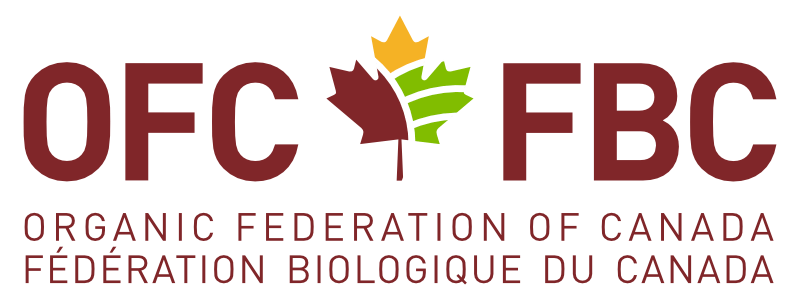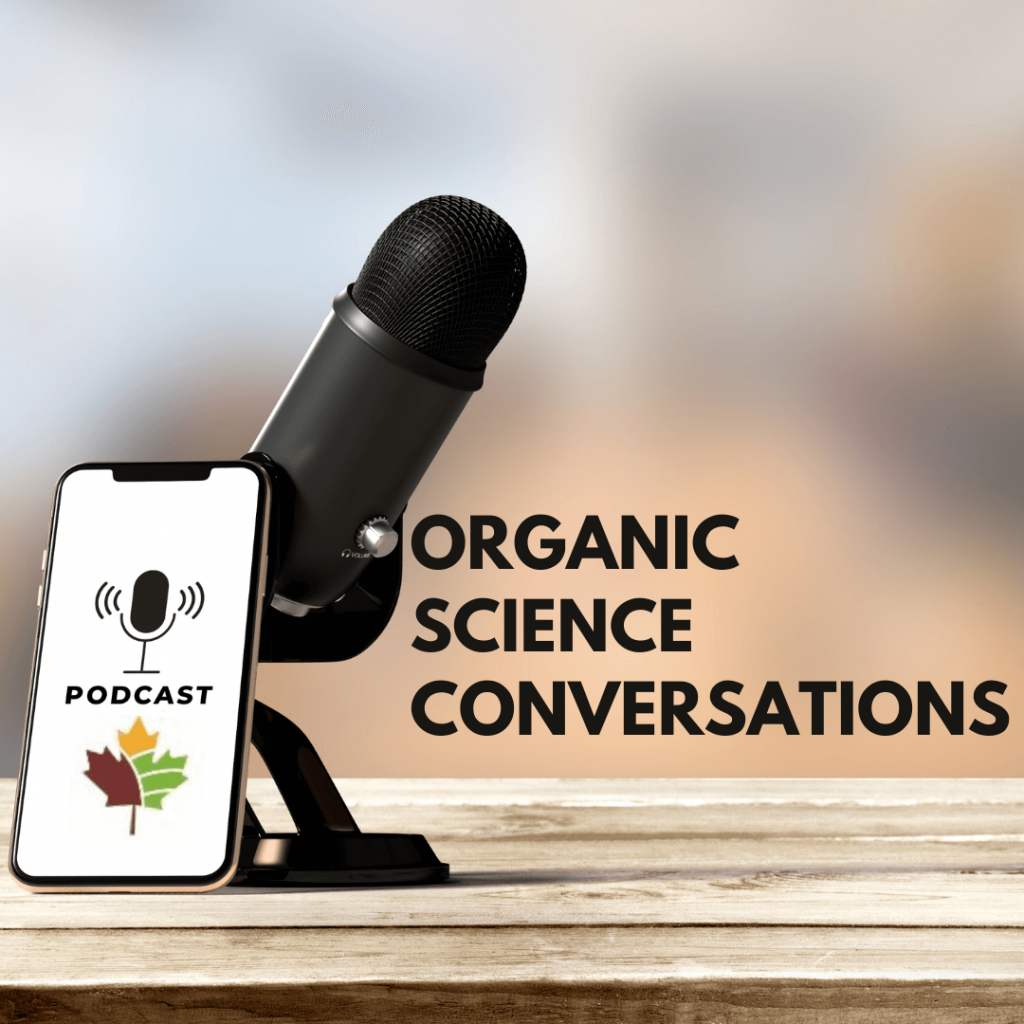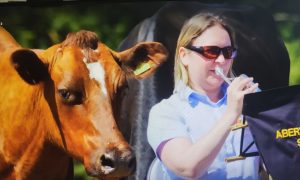Summary
What if we could replace the antibiotics used in nonorganic broiler production with berry products? Dr. Moussa Diarra has found exciting results in his OSC3 research activity when feeding organic cranberry and wild blueberry pomace to organic broiler chickens.
Nicole Boudreau interviewed Dr. Diarra on May 29th, 2020
Download the interview with Dr. Diarra in PDF format.
Kelly Ross, from AAFC, participates to this research activity. She was interviewed by Jordan Marr [23:28] in November 2020.
Dr. Moussa Diarra leads a research activity that addresses an important health issue for all of us and for poultry: the need to reduce the use of antibiotics in non-organic poultry production. Bonjour Moussa.
Bonjour Nicole, thanks for having me today.
We all know that cooking chicken has become quite a safety challenge: we have to wear gloves and clean all surfaces in contact with the raw meat to prevent contamination by bacteria. We know that in non-organic poultry production, the birds are given feed containing antibiotics. Organic farmers cannot use antibiotics but must find other ways to keep their birds healthy. Under the research activity that you lead under the OSC3 Project, you are testing a diet solution: what is your approach?
Animals, in general, specifically poultry, can be colonized by a wide variety of bacteria that can make us sick. My key research priority is to limit the colonization of poultry, including organic birds, by pathogenic [disease-causing] bacteria (including Salmonella, Campylobacter, avian pathogenic E. coli, and Clostridium perfringens) while maintaining bird health, production efficiency and consumer satisfaction.
We need to develop an effective alternative approach for poultry. We believe that plant-derived compounds can provide solutions to control these pathogenic bacteria in poultry. During our OSC2 project, we showed that pomaces from cranberries and blueberries, and their ethanolic extracts, can control the growth of pathogenic bacteria. When we included [the berry byproducts] in feed for chickens, we saw that those products can modulate gut microbiota [the microbes that live in the digestive system].
A response was also noticed in the blood of the chickens. For example, we saw improvements in the blood metabolite profile. In light of those findings, we decided to develop the OSC3 project to expand upon our earlier research and continue our efforts to optimize the use of berry pomace for organic chicken production.
Why is the gut health of chickens important?
Gut health is very important. As a research scientist at the Guelph Research and Development Center since 2013, I have been working on antimicrobial resistance; bacteria pathogenesis; the interaction between pathogens and their hosts; as well as the discovery and development of novel alternatives to antibiotics for livestock and poultry. Since gut health is very important in all animal production, there is an increased interest to develop alternative gut health solutions.
A healthy gut promotes poultry growth and improves performance and welfare. Gut health is associated with health and plays an important role in digestion and the entire health of animals, including immunology and the immune response.
When we talk about gut health, we think of gut microbiota. Gut microbiota provides vitamins, especially Vitamin K and B, and metabolites. The gut microbiota prevents gut colonization by pathogens by competing for attachment sites and essential nutrients.
The beneficial organisms in the gut also regulate intestinal mobility and overall immunity. They can produce substances that can inhibit other bacteria, non-indigenous ones. They also stimulate the development of certain tissues. That is why gut health is very important and why more people are now working on how we can improve gut health by modulating bacteria into the gut.
Key points
- The berry byproducts create a healthy gut microbiota, the microbial population of the gut. They lead to greater abundance of beneficial microorganisms, such as Lactobacillus and Bifidobacteria, which compete with disease-causing bacteria for nutrients and attachment sites (like using a cover crop to compete with weeds for nutrients and ground cover).
- The berry pomaces have additional benefits in terms of improving both the immunity of the birds and feed efficiency (i.e., ratio of weight gain to feed intake).
So, you are helping by feeding berries to poultry. What components in the berries are responsible for this effect? And is this in all berries?
There are several things in berry byproducts that could be beneficial for poultry and livestock. For the sake of poultry and public health, food safety and even environmental health concerns, it is very important to know how feeding practices can change the gut microbiota in poultry. Wild blueberries showed real potential in term of [developing] the composition of microbiota that could be beneficial to poultry. For example, we show that wild blueberry pomaces in the diet enriches microbes, such as Lactobacillus and Bifidobacteria, that are known to be beneficial bacteria into the gut. In the meantime, they also decrease the population size of bacteria that can be potentially dangerous, such as pathogenic E.coli, Clostridium perfringens, Helicobacter pylori and Salmonella.
[In the lab,] when we exposed Salmonella that has been isolated from poultry to berry products, we found [the berry products were linked with] a substantial inhibition of growth of those bacteria. [This happened even to Salmonella that had resistance to antibiotics]. For example, Salmonella enteritidis, is the most common serotype of [strain responsible for] human salmonellosis in Canada. We found that when S. enteritidis was exposed to berry compounds, it changed its metabolites responsible for taking up essential nutrients. We realized that those changes are detrimental to the growth and survival of Salmonella. That was a very important finding and that was due to the phenolic compounds in the berries.
Berry producers will appreciate the impact of berries on poultry health. So how are you proceeding? What is your workplan to reveal the benefits of berries on poultry health?
First, I would like to point out that if you are working on any project that involves animals, all the research protocols have to be approved first by an independent animal care committee. In our case, we deal with farmers and with a research centre in Deschambault [Quebec]. They have a research protocol review committee in term of animal use, so you need to satisfy all the requirements before they approve your protocol.
During the project, we obtained two experimental study certificates from Health Canada to work with CRSAD [Centre de recherche en sciences animales de Deschambault] using a barn that can accommodate 30,000 birds. We raise the birds from 0 to 36 days at the site. We’ve been working with our valued industry partners who provide us with their pomaces. When we receive the products, we process them and apply the in vivo extract method [i.e., feed the extract to chickens] and then in the laboratories, we test those extracts against different bacteria.
Typically, the plan is that in order [for a product to be tested] in poultry feed, you need to make sure your product has in vivo efficiency [i.e., works within the body of a chicken]. So that’s why we look at the effect [of pomaces] on bacterial growth, gene expression, the adhesion of the bacteria to cells, etc. There are so many things we need to know. We have to know exactly what is in these products; we need to know its composition. Then we compare the effects of the products. There are very few studies on using berry byproducts as a feed supplement in broilers.
There are different components to the investigation of the effect of feed supplements – supplementation with organic cranberry pomaces and wild blueberry pomaces, as well as their extracts, in the poultry diet from 0 to 30 days of age. All our research shows clearly that these extracts in feed increase the body weight during the first 10 days and they also improve feed efficiencies compared with the control. The feed efficiencies for the control was 1.5 and with our product, we got 1.4. That’s a substantial increase. [Feed efficiency is calculated as weight gain relative to feed intake. In this case, the control birds had a feed efficiency of 1.5, which means that the birds put on 1 kg of weight for every 1.5 kg of feed, compared the birds fed the berry pomaces which only needed 1.4 kg of feed for the same weight gain.]
We found a lower prevalence of necrotic enteritis, a disease caused by Clostridium perfringens. This is a real economic issue in poultry production. In the control, 43% of birds showed necrotic enteritis, while [the rates were] down to 25% with blueberry and cranberry pomace. That was very good.
Another thing we found is that these products can lead to an increase of the important bacteria that are known to influence gut health, such as Lactobacillus and Acetobacter, and a decrease of pathogenic bacteria such as E.coli.
Did adding berries to the feed make the feed less palatable to the birds? Did they like it?
I mentioned that those products in the feed increase the body weight. Body weight is linked to feed consumption–if you don’t eat, you will not grow; if you eat a lot, you will grow. What we want is to optimize feed intake to have the maximal growth. In general, feed intake can be an indicator of toxicity of a specific compound of feed. For example, if you feed something that chicken does not like, it will not eat it. When we use berry products in feed, we could not see any significant detrimental effect on growth parameters, such as body weight, feed intake, or feed efficiency from 0 to 35 days.
Do you work with broilers or layers?
I work with organic broilers for now. However, we know that:
- contaminated eggs have been implicated and identified as source of Salmonella in Canada and worldwide,
- berries in our study show an important effect against Salmonella,
- pathogenic E. coli is a major source of colibacillosis, an important disease for layers, and
- we saw an effect of the berry products against those bacteria.
All those results indicate that there is some potential for berry products to also be used with layers to control pathogens, such as Salmonella and avian pathogenic E. coli.
So, what would be the ideal outcome of your research? Have chicken fed cranberry byproducts on a daily basis?
If you look at the conventional broiler production, antibiotics are mixed with feed, and are fed daily from day 0 to until the end. Some antibiotics have a withdrawal period, some do not. Our research has confirmed a significant effect in the early days of growth, the first ten days, without any detrimental effect during the remaining growth period. We can say that we can include these products in diet for, as an example, 0 to 14 days and then remove them. This is the kind of thing we are working on now to identify the exact time and the exact doses for the products to be used for a better production performance.
In some cases, we saw a similar positive effect on growth performance and gut health compared with [common] production using antibiotics; moreover, we saw a better effect on the immune response compared to traditional antibiotics. Antibiotics are not used to improve the immune response but are just used to control bacteria. With our compounds, we not only have antimicrobial agents, we have other substances that can help improve immunity as well. That will be the difference between what we have and the traditional antibiotic use. We expect to see the adoption of berry byproducts in chicken production to improve and maintain their health in at least the period when they are more susceptible to infections.
Will this add to the cost of feed, and ultimately, to the cost of the chicken? Or, maybe if you can remove antibiotics and replace those with cranberry products, there might not be any additional cost for the producers?
This is an excellent question and we’re often asked this. Honestly, I don’t have any clear answer to that. When we started this project, pomace did not have any value; our industry partners provided pomace for free and we processed it ourselves. Of course, if [the health benefit] is very significant and producers start to use it, there will be a cost associated to the products. My role is to provide scientific evidence to show that it can be useful; the economics people will come up with the cost. That is not my expertise.
There is a proverb stating that food is the best medicine. We wish you success and will look forward to the final results of your activity that will end in 2021.
Thank you, Nicole. We expect to have a productive project and we hope to work with farmers and to help them.
This transcript has been edited for clarity and conciseness.






